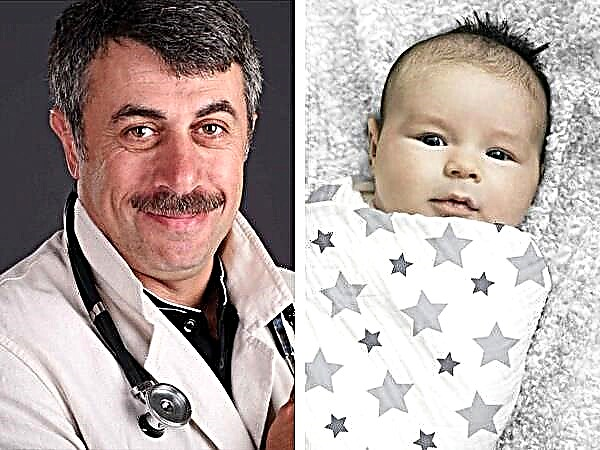The very first numbers that every mother remembers her whole life is the height of the newborn and its weight. It is customary to communicate the same parameters to relatives and friends along with the news of the birth of a child. Those who have children begin to compare "characteristics" with those that their babies possessed at birth. And those who do not have children do not even understand whether it is good or bad that a child was born with such a height and weight.

Newborn
The weight of a child at birth is considered to be the value obtained within the first hour after birth. Depending on whether the baby is full-term or not, medicine identifies options for the norm.
Normal weight in newborns
Children are so individual in their development that a fairly wide range of values is considered normal:
- for full-term babies - from 2.5 kg to 4.5 kg;
- for premature babies, the lower limit of body weight is 1 kg.
Interesting. Modern equipment in maternity hospitals allows to provide vital functions for premature babies even weighing 800 g.
What weight and height should a child have
Pediatrician of the highest category, Evgeny Komarovsky, adheres to the classification of acceptable variations in height and weight adopted by the World Health Organization. However, he asks not to exclude heredity. If parents are concerned that their baby is overweight, then the first thing they should do is compare themselves to the average adult.
The genetic features of the skeletal structure and the formation of muscle and adipose tissue are inherited by children. If the dad is tall, with elongated limb bones, the son of such a dad will never be below average. Accordingly, the weight of this baby will significantly exceed the average, and this will be an absolute variant of the norm.

Big child
The same applies to small children: if the parents are short, medium-sized, then the child will inherit this feature from them. In this case, the body weight of a newborn that goes beyond the lower limit of the norm will also not be considered a deviation.
When a full-term baby is born to parents with average weight and height, whose body weight exceeds 4500 g, the woman is most often to blame. If during pregnancy she led a sedentary lifestyle and ate without following the recommendations of the local obstetrician, abusing overeating, it is not surprising that the child will be born with overweight.
Child weight table according to WHO
The World Health Organization provides a publicly available table of values for weight and height in newborns.
Average indicators of weight and height at birth according to WHO
| Index | Childbirth | |||
|---|---|---|---|---|
| first | second | first | second | |
| boys | girls | |||
| Body weight, g. | 3533 | 3627 | 3316 | 3506 |
| Height, cm | 53,5 | 54,1 | 52,7 | 53,3 |
| Normal range, g. | 3000-4000 | 2800-3800 | ||
According to the table, we can say how many centimeters and grams girls are almost always smaller than boys, and it is also easy to see that first-borns are slightly inferior to their younger brothers and sisters at birth.
Interesting. While carrying twins, one of the babies will have greater weight and height than the second. Even twins are not born with exactly the same height and weight.
Causes of underweight
The intrauterine development of the child depends on how the pregnancy proceeded. If a pregnant woman suffered from toxicosis for a long period, could not fully eat, the baby also received less nutrients. A similar situation happens with those expectant mothers who abused weight gain in the first months, as a result of which the doctor could recommend a diet that helped the woman stop the excess volume gain, and deprived the child of additional grams.

Toxicosis
If at an obstetrician's appointment the thickness of the ankles exceeds the standard values, the pregnant woman is diagnosed with swelling and prescribed diuretics and a diet, which also affect the fetal body weight.
Deviation from the norm: is it worth worrying
In order to make sure that the weight of a newborn baby is the norm, a table is often not needed. It is enough to watch the baby. When the baby is active, requires food about once every two to two and a half hours, does not cry after he has torn from the breast, you should not weigh him every time to compare with the readings from the table of norms.
Additional Information. According to statistics, from 15 to 20% of children have deviations from the norms, but they did not have any developmental anomalies.
Newborn weight at discharge
Within a few hours after giving birth, babies begin to lose weight. This is because:
- the intestines are emptied - the original feces of a dark green color come out;
- the bladder is repeatedly emptied;
- birth puffiness subsides.
Additional Information. Control weighing, which will show how much the baby has lost in weight, is carried out on the third or fourth day after birth.
Physiological weight loss
A loss of 5-8% of body weight from the original is considered normal. That is, if a child weighed 3 kg at birth, then he can lose from 150 g to 240 g by the time of discharge, this will be within the acceptable range.
In cases where the baby loses more grams, it should be examined to identify the causes of pathological weight loss. First you need to eliminate fluid loss:
- assess the air temperature in the ward - if it is warmed up to more than 22˚C, the child is exhausted from the heat;
- evaluate the humidity in the ward - if it is below 55%, the baby has lost a large amount of his fluid, moistening the inhaled air with the mucous membranes of the respiratory tract;
- lack of colostrum in the mother;
- accelerated metabolic process.

Lactation
Important! In order to exclude pathological loss of fluid, newborns are supplemented with water during the hot season, if it is not possible to regulate the air parameters.
Weight gain in newborn babies
On the fourth day, milk arrives at the woman who has given birth. Therefore, after 4 days, the newborn begins to gain weight. During breastfeeding, he no longer receives colostrum in small doses, but the first real milk.
Average rates of increase
Every month, a mother with a baby should visit a pediatrician in order for him to assess the condition of the child, and also find out how much the weight and height of the child have changed from the indicators at birth.
On average, an infant can add the following grams each month:
- at the age of 4 weeks - 600 grams;
- two-month-old becomes 800 grams heavier;
- a three-month-old baby also adds - 800 grams;
- from the 4th month of life, weight gain begins to slow down a little - 750 grams;
- at the 5th month of life, the weight gain is about 700 grams;
- The 6th month of life adds another 650 grams.
Just like body weight, the addition of centimeters in height in the first months is more intense than in the following:
- in the first month, the baby increases the body length by 3 cm;
- a two-month-old baby grows another 3 cm;
- during the third and fourth months, the baby adds 2.5 cm in length;
- the fifth and sixth months increase the child's height by 2 cm each.
You should always weigh the little one naked, laying only a diaper, because baby scales are highly accurate - they can easily show the mass of one razor blade. If the functionality of the device does not allow you to automatically subtract the weight of the diaper, you will have to do it yourself, having previously measured its weight without the baby.
On a note. If there are no special baby scales at home for measuring a newborn, and the family budget does not allow them to be purchased, but there are ordinary adults, it is easy to measure a baby on them. To do this, someone, for example, dad, is weighed first without the child, and then with him. By subtracting his own weight from what the scales showed when weighed together, the dad can find out the weight of the child.
Poor weight gain
If the weight gain in a month is minimal, the pediatrician will definitely notice this at the next scheduled examination. More often this situation occurs in twins - not everyone's breast milk arrives in the required amount in both breasts in a couple of hours. Such babies need supplementary feeding with milk mixture, if there are no other reasons for weight loss.
Increase in body weight up to a year
By the end of the first year of life, the average weight and height of a newborn increase by 7150 g and 25 cm, respectively. The physical development of the child will no longer flow as swiftly as a mountain river flows. The next changes in its height will be about 6 cm per year.
The first year of life is one of the most difficult for mothers. However, with the proper organization of the diet, sleep and wakefulness, parents will be able to achieve peaceful nights and enjoy caring for their child. The baby is growing rapidly in the first year, a small kitten has just been born, and now, like a big elephant, sits on a feeding chair. The less a mother compares her child with the numbers from the tables, the calmer and happier she feels. A child's health does not lie in conformity with standards, but in his well-being and a cheerful mood.



